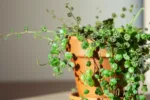The Lady Palm (Rhapis Excelsa), also known as the Broadleaf Lady Palm or Bamboo Palm, is a species of fan palm native to southern China and Taiwan. The Lady Palm, scientifically known as Rhapis excelsa, is a popular houseplant renowned for its elegant appearance and resilience.

Types of Lady Palm Plant
Here’s a closer look at some popular types:
- Rhapis excelsa
- Rhapis excelsa ‘Koban’
- Rhapis excelsa ‘Daruma’
- Rhapis excelsa ‘Tenzan’
- Rhapis humilis
Benefits of Lady Palm Plant
Oxygen The cleaning: It functions as a kind of organic air filter, eliminating common air pollutants such as formaldehyde and ammonia, giving you cleaner air to breathe.
Minimal Upkeep Beauty: Its rich green foliage gives your home a sense of elegance, and it’s very low maintenance. It doesn’t need to be watered continuously and can withstand reduced light levels.
Noise reduction: Plants like lady palms can help reduce high-frequency disturbances, making indoor areas more pleasant and peaceful, even if they are not as effective as specialist sound-absorbing materials.
Longevity: Lady palms provide a durable ornamental accent to interior spaces and may thrive for many years with the right care.
Non-Toxic: Lady palms are safe to have in homes with children and animals as they are not thought to be harmful to people or pets.
Disadvantages of Lady Palm Plant
- Slow Growth: If you’re looking for a plant that will fill a space rapidly, the Lady Palm might not be the best choice. It grows slowly, so it may take some time for it to reach its full potential.
- Pest Propensity: Although they are not as common as other plants, mealybugs, scale, and spider mites can affect lady palms. Regular treatment and inspection can help prevent infestations.
- Cost: In comparison to some other common houseplants, lady palms, especially the larger variety, can be somewhat expensive to purchase at first. Some may perceive the initial cost to be a drawback despite its lifespan and durability.
- Smaller: Despite being smaller than some other palm species, mature lady palms need a fair deal of space due to their bushy nature. when your living space or place of business is small, this can be an issue.
Lady Palm Plant Care
Here’s the basic care for your Lady Palm:
Light: Bright, indirect light. No harsh sun rays.
Water: Water deeply when the top inch of soil feels dry (winter) or two inches (summer). Let the excess water drain out. Don’t overwater!
Humidity: Likes medium to high humidity. Mist the leaves regularly or use a pebble tray.
Temperature: Comfortable room temperatures (60-80°F). Protect from cold drafts.
Fertilizer: Monthly weak dose of liquid fertilizer during spring and summer.
Propagation of Lady Palm Plant
Timing: Early spring or late fall is ideal.
Separate the Offsets: Look for baby palms (shoots) growing at the base of the mother plant.
Sterilize Tools: Use rubbing alcohol or bleach to clean your pruners or knife.
Divide Carefully: Cut the shoots with some roots attached.
Pot the Offsets: Plant each shoot in a pot with a well-draining soil mix. Water moderately.
Indirect Light & Patience: Keep the new palms in bright, indirect light and wait for new growth, a sign of successful propagation!
Repotting of Lady Palm Plant
- Water Well: Moisten the soil in the current pot a day before repotting. This loosens the soil and makes it easier to remove the plant.
- Gently Remove: Tilt the pot and tap on the sides to loosen the root ball. Slide the plant out carefully.
- Inspect Roots: Briefly check for any brown, mushy roots and prune them off with sterilized pruners. Don’t disturb healthy roots excessively.
- New Pot Prep: Place a well-fitting drainage mesh in the new pot (optional but helps drainage). Add a layer of fresh potting mix.
- Position & Fill: Place the Lady Palm in the new pot, keeping it at the same soil level as before. Fill the gaps with fresh potting mix, gently firming it around the roots.
- Water Thoroughly: Water the plant generously until water runs out of the drainage holes.
Lady Palm Plant Disease
Root Rot: Root rot is brought on by excessive watering or inadequate drainage, which can make the roots of the plant deteriorate. A bad smell, squishy stems, and yellowing or withering leaves are some of the symptoms.
Leaf Spot: Fungal infections may result in the formation of dark patches or lesions on the Lady Palm’s leaves. Avoid watering your leaves from above to prevent leaf spots, since this might encourage the growth of fungi. Eliminate any impacted leaves and enhance the plant’s airflow.
Pests: Spider mites, mealybugs, and scale insects are among the pests that lady palms may draw. These pests have the ability to weaken the plant and destroy the leaves. Check the plant frequently for indications of pest activity, and address infestations quickly using neem oil or insecticidal soap.
Lady Palm Plant Vastu
Vastu principles may be used to the placement of Lady Palm plants by following these guidelines:
North or East Direction: It is said to be very beneficial to place a lady palm plant in the north or east of your house or place of business. Positive energies are linked to these directions, thus positioning the plant in this direction can help the positive energy flow.
Avoid South or Southwest Direction: Generally speaking, it’s best to keep the Lady Palm plant away from areas that face south or southwest. Given their association with negative energies, these orientations might not be ideal for the plant’s development or the flow of good energy.
Clean Surroundings: tidy surroundings Make sure everything surrounding the Lady Palm plant is tidy and uncluttered. This guarantees the health of the plant and aids in preserving good energy flow.
Lady Palm Plant for Pets
Lady Palm (Rhapis excelsa) is generally considered safe for pets such as cats and dogs. However, it’s always a good idea to take precautions when introducing any new plant into your home, especially if you have curious pets who may nibble on them.
How to Buy Lady Palm Plant
Local Nurseries and Garden Centers: Visit local nurseries and garden centers in your area. A diverse range of flora is frequently available at competitive prices. Lady Palm plants are often offered in a variety of sizes; therefore, lesser or juvenile plants are generally more cost-effective compared to their larger counterparts.
Online Marketplaces: Check online marketplaces such as Amazon, eBay, or Craigslist for merchants offering Lady Palm plants at competitive prices. Both new and pre-owned plants are potentially available for purchase. It is advisable to thoroughly peruse vendor reviews and descriptions prior to finalizing a purchase.
Lady Palm Plant Names in Other Languages
Here are the names of the Lady Palm in some other languages:
- Spanish: Palma de Damas or Palma China
- French: Palmier de Chine
- German: Steckenpalme or Bambuspalme
- Italian: Palma delle dame
- Portuguese: Palmeira-dama
- Dutch: Bamboepalm
- Russian: Пальма Леди (Pal’ma Ledi)
- Japanese: レディパーム (Redi Pāmu)
- Chinese (Mandarin): 女人掌 (Nǚrén zhǎng)
- Korean: 레이디 팜 (Reidi Pam)
- Hindi: लेडी पाम फलवाला (Lady Palm Phalwala)
- Telugu: లేడీ పామ్ చెట్టు (Lady Palm Chettu)
- Kannada: ಲೇಡಿ ಪಾಮ್ ಸಸ್ಯ (Lady Palm Sasya)
- Tamil: லேடி பாம் தாவரம் (Lady Palm Thavaram)
Conclusion
Lady Palms feature dense clusters of slender, fan-shaped leaves that give them a lush and tropical appearance. The leaves are dark green and deeply segmented, adding to their ornamental value.
FAQs of Lady Palm Plant
- What are the benefits of having a Lady Palm Plant?
Ans: Lady Palm plants are great for making your home look beautiful and adding a tropical touch. They can also help improve indoor air quality by filtering out toxins. - Are there any disadvantages to having a Lady Palm Plant?
Ans: While Lady Palm plants are generally safe, some people may have allergies to their pollen or sap. Also, if ingested by pets, they can cause stomach upset. - How do you take care of a Lady Palm Plant?
Ans: Lady Palm plants like bright, indirect sunlight and regular watering. Make sure to keep the soil moist but not soggy, and mist the leaves occasionally to keep them clean. - How do you make more Lady Palm Plants?
Ans: Lady Palm plants can be propagated by dividing the plant at the roots and replanting the sections in new pots. This helps create new plants from one parent plant. - When should you give your Lady Palm Plant a bigger pot?
Ans: If your Lady Palm plant starts to outgrow its pot or if the roots become crowded, it may need to be repotted into a larger container with fresh soil. - What can make a Lady Palm Plant sick?
Ans: Overwatering or underwatering can make a Lady Palm plant sick. It’s important to water them just enough and ensure good drainage to prevent root rot. - Is there anything special about where you put a Lady Palm Plant?
Ans: Some people believe that placing a Lady Palm plant in certain areas of the home can bring positive energy and tranquility. - Is Lady Palm Plant safe for pets?
Ans: Lady Palm plants are generally safe for pets, but it’s best to keep them away from pets who might try to chew on the leaves. - How do you buy a Lady Palm Plant?
Ans: When buying a Lady Palm plant, look for one with healthy, green foliage and no signs of pests or diseases. Ensure that the pot has good drainage and that the soil is moist but not waterlogged.



Great goods from you, man. I’ve take note your stuff prior to and you’re simply extremely great. I actually like what you’ve obtained here, certainly like what you’re saying and the way through which you say it. You’re making it enjoyable and you still take care of to keep it wise. I can not wait to learn much more from you. This is actually a great website.